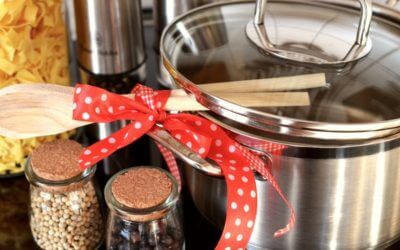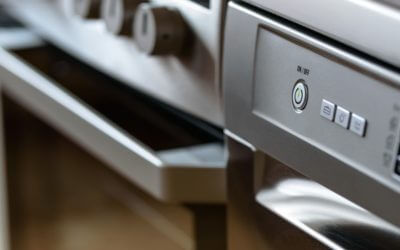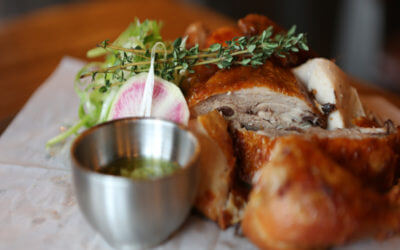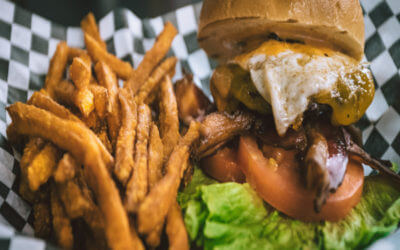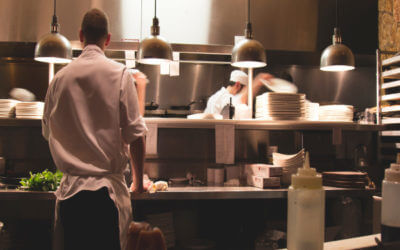How to Keep Cool in the Restaurant Kitchen
August 15Being in the kitchen, it’s hard not to feel overheated, especially during the summer.
The heat of the stoves and ovens will quickly make the restaurant kitchen somewhere you don’t want to be. How do you keep cool in the kitchen? We have brought together some of the best tips for keeping cool in the hottest area of the restaurant.
Air Conditioning in your Restaurant Kitchen
A lot of restaurants have air conditioning units in the seating part of their establishment but not in the kitchen. Many restaurant owners and managers believe AC is more important in the dining area because without it, less customers would want to dine there. However, AC is important in staff areas too – perhaps more important than many managers realize. Not having a proper air conditioning unit is a quick way to lose team members. Hot restaurant kitchens may also lead to on-the-job injuries, such as heat stroke.
Good Ventilation in your Restaurant Kitchen
Having your restaurant kitchen properly ventilated will help to dissipate the heat created by your kitchen appliances. Make sure that all stoves and ovens have ventilation units and that they are regularly maintained. That includes cleaning and inspecting. General heat vents can also help to get rid of some of the heat that you might be experiencing in the kitchen.
Hydrate Regularly
When working in a hot environment, your body is going to need to use fluids more quickly in order to keep your body functioning well. That includes your body being able to cool itself. Aim to drink between two to four glasses for every hour that you are working in a hot restaurant kitchen. This will help to maintain the proper temperature for your body.
Take Turns in The Walk-In
Taking turns getting supplies from and cleaning the walk-in fridge. This will give you the chance to quickly cool down. Try to take turns with the whole team so that it is distributed fairly. When you walk in to grab something, spend an extra minute in the walk-in and let your body temperature lower. Putting a chair in there allows employees to take a cool break, as long as they are clean about it.
Restaurants that take up this practice find that their walk-ins are cleaner, treated well, and even become a place cherished by the team members.
Moist Towels
Many restaurants have started to store moist hand towels in the fridge or freezer. These towels are then pulled out by staff members to put on their necks. The cold temperature on their neck helps to chill down the rest of their body. They can then swap out towels whenever their towel is no longer cold. Practices like these are best when picked up by the restaurant, so that employees don’t need to bring towels from home. This way, the towels can be cleaned on site and reused by every staff member once cleaned.
Keeping cool in a restaurant kitchen is critical. It can raise efficiency and protect employees from heat-related health problems. Talk to your team members to see if they have any further ideas to help keep the kitchen cooler. They will often see areas that can be improved more than owners or managers, simply due to the fact they are in the kitchen more often.
What’s in a Cooking Pot, How to Choose the Right One?
As a restaurant owner, your cooking needs might vary. Did you know that a good quality pot can greatly improve your cooking experience, while also improving the quality of your cooking? This cooking equipment is a very important one that cannot be done away with...
5 Things Every Restaurant Owner Should Do Before Buying Used Kitchen Equipment
Equipping your restaurant properly can cost a lot of money, so buying used kitchen equipment is the go-to choice for many restaurateurs. Buying used kitchen equipment for a restaurant is a bit different than buying used equipment for your home, however. You will...
Top Restaurant Technology Trends in 2018
When looking to buy restaurant supplies, you want to be on the leading edge of technology trends. This will keep your kitchen running smoothly. Let’s take a look at some of the most recent trends in restaurant supplies technology. 1. New Payment Options Who would...
5 Different Ice Shapes and Why You Should Care About Them
Ice makers are very popular in the restaurant and foodservice community because they eliminate the need to buy ice every day. And of course, adding an ice maker to your collection of foodservice equipment means you will always have ice on hand when you need it. An...
Pulping and Grinding: A Starter’s Guide to Reducing Commercial Food Waste Costs
For most restaurant owners and managers, the expenses involved in making meals are always under careful consideration. Water is needed to prepare, cook and wash food; power is necessary for food prep, cooking and cooling, and so on. However, how many of us consider...
Choosing the Right Milk Cooler: Cold Wall or Forced Air?
In a restaurant, milk is an essential to have on hand for coffee and other café-style beverages, for serving with kids’ meals, and as a key ingredient in many recipes. Keeping your milk properly chilled can be difficult without the proper restaurant equipment....
How to Choose Your Next Commercial Meat Smoker
The movies that connect with us on a personal level are the ones that linger in our memories forever. Anyone who has used a commercial meat smoker knows that they have a huge influence on the taste of a meal. You need to have just the right kitchen equipment to get a...
Are High Speed Ovens Too Good to be True?
You might have heard a few of the bold claims that foodservice equipment manufacturers have been making about high speed ovens, but they can’t be possible, right? Cooking three times as faster as regular ovens? Five times as fast? Fifteen times as fast? It may seem...
Choosing the Right Food Storage Containers for Your Restaurant
Choosing the right kitchen supplies will make a difference in your restaurant. Whether it is heavy duty kitchen equipment or food storage containers, each piece of equipment plays its own important role. Today, we are going to talk about how to choose the right food...
Tipton’s Guide to Perfect Poultry Trussing
Do you ever truss birds in your commercial kitchen? Trussing is a fantastic cooking technique because it makes poultry cook faster, look more attractive and taste better. If your commercial kitchen prepares poultry, you don’t want to miss these trussing tips. Trussing...
How to Eliminate Excess Condensation in Your Kitchen
Is your commercial kitchen getting steamy? If so, you could have more than just an uncomfortable working environment on your hands. Excess moisture in your commercial kitchen can result in the corrosion of equipment, the development of mold, and even damage to your...
The DIY Guide to Your Restaurant’s Own Garden
Stocking your restaurant supply with your own home-grown herbs and produce can truly bring your dishes to life. When it comes to food, everyone knows there’s nothing like homemade and home-grown. Having your own culinary garden, however large or small, can help you...
5 Reasons a Meat Grinder Will Set Your Burgers Apart
The more you do to prepare your foods in-house with the right kitchen equipment, the fresher and more flavorful your dishes become. There are all sorts of restaurants offering fast-food style burgers, but some diners are looking for the real deal. A fresh, juicy...
Pest Preventions to Implement in Your Commercial Kitchen
Restaurant pests: it’s something that few people want to think about. Like it or not, pest management is an essential consideration for every commercial kitchen. Offering food, shelter and water, the unprepared commercial kitchen naturally provides everything pests...
Choosing the Right Material for Your Cooking Equipment
Kitchens are very unique to their chef. Just like a car mechanic has a toolbox unique to them, so is the cooking equipment in a kitchen. And over time, the same cooking equipment become a natural extension of the chef. What tools are you using in your kitchen? It...

